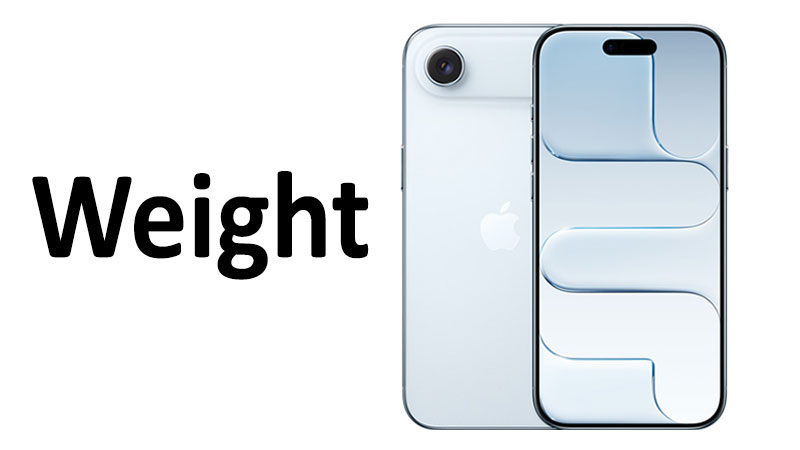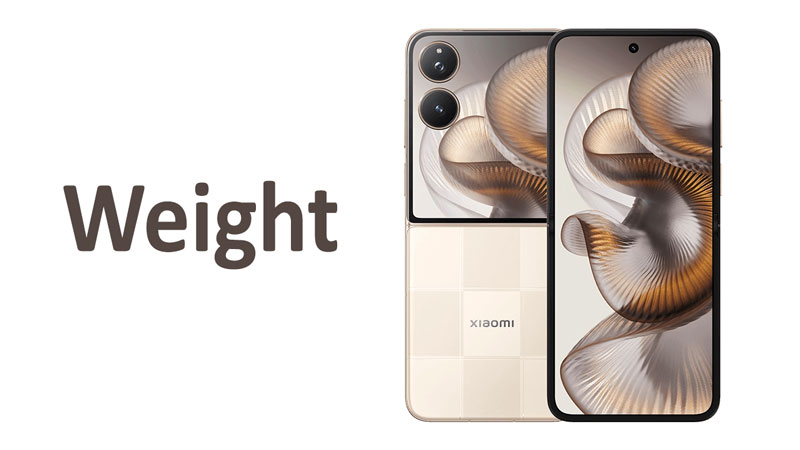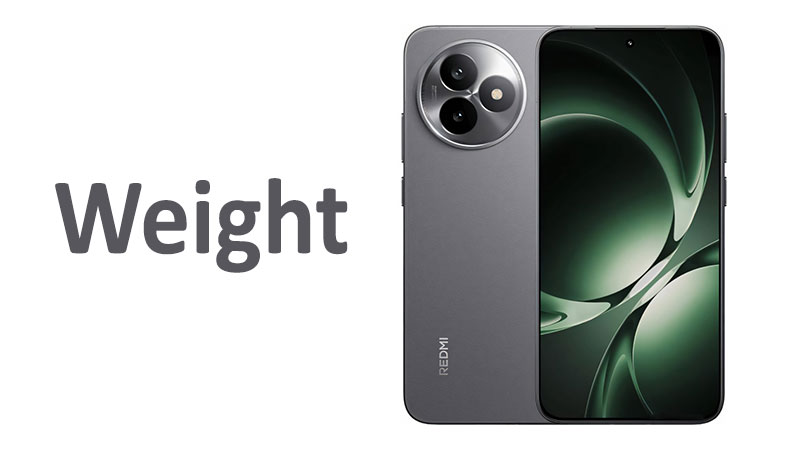The weight of a smartphone is a crucial factor for many consumers. It impacts everything from one-handed use to pocket comfort. The Apple iPhone Air redefines what a phone can feel like. Its ultra-light design focuses on premium portability. This article provides a comprehensive look at the Apple iPhone Air weight in grams and ounces. It also offers a detailed comparison to other models.
The Breakthrough in Lightweight Design
The iPhone Air is a marvel of engineering. Apple designed it to be impossibly thin and light. The device weighs just 165 grams (5.82 ounces). This makes it significantly lighter than most flagship smartphones. It is even the thinnest iPhone ever made. This impressive weight reduction comes from a combination of advanced materials and innovative architecture.
Apple used a titanium frame for the iPhone Air. This is a crucial detail. Titanium is both strong and incredibly light. It allows for a durable yet feathery build. The company also re-engineered the internal components. This maximizes space and minimizes bulk. This approach allowed Apple to create a large phone that feels small in your hand.
Apple iPhone Air Weight in Detail
The official Apple iPhone Air weight is 165 grams. This translates to 5.82 ounces. These numbers highlight Apple’s focus on a new design philosophy. The goal was to create a phone that feels almost nonexistent. This is a stark contrast to the heavier “Pro” models. Those phones often prioritize advanced features over portability.
Holding the iPhone Air for the first time is a unique experience. It feels incredibly balanced and sleek. The weight distribution is excellent. This makes the phone easy to handle. Many users will appreciate this lighter feel. It reduces hand fatigue during long use. It also makes the phone less noticeable in a pocket or bag.
Comparison: iPhone Air vs. Previous Models and Competitors
The iPhone Air’s weight is a major differentiator. Let’s compare its weight to other popular phones.
Comparison with Previous iPhones
Previous iPhones were generally heavier. The iPhone 16 Pro Max, for instance, weighed over 220 grams. The standard iPhone 16 was also heavier than the new Air. This shows a clear shift in Apple’s design strategy. The iPhone Air brings back the feel of earlier, more compact iPhones. However, it does so with a much larger display. This is a significant accomplishment. The new design proves that a bigger screen does not require a heavier body.
Comparison with Competitors
The iPhone Air also stacks up well against competitors. Many Android flagship phones are quite heavy. Some models from Samsung and Google exceed 200 grams. For example, the Samsung Galaxy S25 Edge is 5.8mm thick, but its weight is comparable to other flagships. The iPhone Air is even thinner at 5.6mm. This makes the iPhone Air one of the lightest large-screen phones available. The lightness gives it a distinct advantage. It offers a premium feel without the extra bulk.
Pros and Cons of the iPhone Air’s Weight
The lightweight design of the iPhone Air has several benefits and a few potential drawbacks.
Pros of the Lightweight Design
- Improved Portability: The phone is very easy to carry. It feels comfortable in a pocket. It is also less noticeable in a small bag or purse.
- Enhanced Ergonomics: Lighter weight reduces hand and wrist strain. This is important for people who use their phone for many hours.
- Premium Feel: The combination of the titanium frame and light weight creates a unique, high-end sensation. It feels like a futuristic device.
- A New Class of iPhone: The iPhone Air represents a new category. It balances a large screen with incredible portability. It offers a fresh alternative to heavier Pro models.
Cons of the Lightweight Design
- Perceived Fragility: Some people associate weight with durability. The iPhone Air might feel delicate to them. However, its titanium and Ceramic Shield build makes it very strong.
- Potential Trade-offs: The light design comes with some compromises. The battery is smaller than in the Pro Max. The camera system also lacks some features found on the Pro models. These trade-offs were necessary to achieve the ultra-thin profile.
Important Points for Buyers and Readers
The weight of the iPhone Air is a key selling point. However, buyers should understand what it means for the device. The phone’s light build is a result of specific design choices.
- Build Materials: The iPhone Air uses a titanium frame. It also features a Ceramic Shield 2 glass front. This is a special glass-ceramic material. It offers three times better scratch resistance. The back is also protected by Ceramic Shield. This makes the phone highly durable despite its lightness.
- Internal Architecture: Apple completely redesigned the phone’s internal layout. This allowed them to place components more efficiently. The camera “plateau” is a key part of this. It houses most of the internal electronics. This frees up space elsewhere.
- Battery and Cameras: The thin design required a different battery. The iPhone Air’s battery is high-density but not as large as the Pro Max. Its camera system is also a single-lens 48MP setup. This is different from the multi-lens Pro models. These choices were necessary for the slim profile.
Conclusion
The Apple iPhone Air weight marks a new direction for Apple. At 165 grams (5.82 oz), it is a triumph of design and engineering. The phone proves that thin and light can also be durable. Its titanium frame and Ceramic Shield glass provide a robust yet elegant build. This makes the phone feel comfortable and premium.
While the iPhone Air makes some compromises, its core appeal is strong. It offers a large, vibrant display and Pro-level performance. It does this in a package that is remarkably portable. For users who prioritize a sleek design and comfortable feel, the iPhone Air is the perfect choice. It is a bold statement. It shows Apple’s commitment to pushing design boundaries.
FAQ
What is the official weight of the Apple iPhone Air?
The official weight of the Apple iPhone Air is 165 grams (5.82 oz).
How does the iPhone Air’s weight compare to other iPhones?
The iPhone Air is the lightest large-screen iPhone. It is significantly lighter than the iPhone 16 Pro and Pro Max models.
Is the iPhone Air’s lightweight design durable?
Yes, the iPhone Air is very durable. It uses a titanium frame and Ceramic Shield glass on the front and back. These materials make it strong and scratch-resistant.
What sacrifices were made to achieve the iPhone Air’s light weight?
The phone has a smaller battery and a single-lens camera system. These design choices were necessary to create the thin and light profile.
What is the build material of the iPhone Air’s frame?
The iPhone Air’s frame is made from grade 5 titanium. This material is lightweight and incredibly strong.



